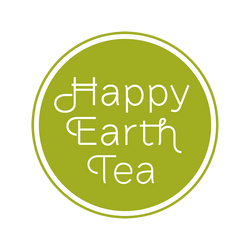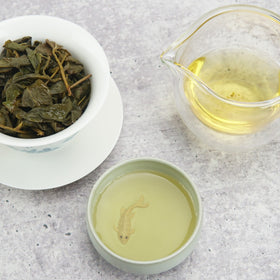
Conventional Tea Farming Practices
In our last blog post we talked about why we prefer organic methods of growing tea. This time we look into the common practices in tea gardens where tea is grown using "conventional" methods. Conventional farming is a term applied to agriculture where synthetic chemicals are used for crop management.
In the conventional tea gardens synthetic chemicals are used mainly to control pests, weeds and fungal infections. The guidelines regulating the application of the chemicals are laid down by the government, in case of India it is the Tea Board. Tea growers are not supposed to use chemicals without following proper norms, including training of the workers or the "spraying squad" as they are called in Indian tea estates. The regulations in big tea importing regions like Europe and Japan for minimum chemical residuals also influences decisions in the tea gardens particularly those who depend on selling their tea abroad.

Different chemicals in tea farms are used depending on the purpose of application, and types of weeds. For instance it is common to use the herbicide "2,4-D " for broad leaf weeds, whereas the thin leaf varieties get "Gramoxone." Notably, the latter is labeled by EPA as "Restricted Use Pesticide due to acute toxicity." Workers have to use PPE to apply this chemical. 2,4-D is considered to be "moderately toxic" and one can buy it on Amazon.
Most of the herbicide tend to be used during the monsoons when the growth of weed explodes. But it is also applied early, during first spring showers. Pesticide is used as and when the pests are spotted. Sulphur-based pesticides are commonly used for pest control, while for fungal growths copper oxichloride is used.

In conventional gardens they try to have around 10-day gap between application of chemicals and plucking. Each chemical has its gestation period. This is normally maintained by one of the assistant managers.
There is increased awareness in the tea industry on limiting the use of synthetic chemicals. This is reflected in a Tea Board of India statement that goads the tea growers to use chemicals only as a last resort. "Need based, judicious and safe application of pesticides is the most vital aspect of pesticide usage under Integrated Pest Management program. It involves developing IPM skills to play safe with environment by proper crop health monitoring, observing ETL and conserving the natural bio-control potential before deciding in favor of use of 16 chemical pesticides as a last resort. Moreover, safety harvest intervals (waiting period) for different pesticides have also been established in tea farming based on the field data generated during the last few years. This data will help the industry to decide the harvesting interval for tea after the application of the chemicals and to keep their residue levels below the MRL prescribed by EU."
Tea gardens are reluctant to convert to go the organic tea route because it takes around 3 years to make the switch and the yield can fall below 50%. Whereas the price compensation is not matched by the fall in production. The cost of producing organic tea can be is double compared to the cost under conventional methods.
Below is a list of different permitted chemicals in conventional tea gardens. They are listed according to different strengths and combinations as found in Indian tea gardens. We are using this as an example; it could be different in different parts of the tea world.
Name of agro-chemicals:
Acaricide (used to kill ticks and mites)
Cyflumetofen 20 SC
Dicofol 18.5 EC
Ethion 50 EC
Fenazaquin 10 EC
Fenpyroximate 5 EC/SC
Hexythiazox 5.45 EC
Propargite 57 EC
Sulphur 80 WP
Sulphur 40 WP
Spiromesifen 240 SC
Etoxazole 10 SC
Pyridaben 20 WP
BOLD Insecticide
Azadirachtin 1% EC
Azadirachtin 5% EC
Bifenthrin 8% SC
Clothianidin 50 WDG
Deltamethrin 2.8 EC
Quinalphos 25 EC
Thiacloprid 21.7 % SC
Thiamethoxam 25 WG
Emamectin Benzoate 5% SG
Fenpropathrin 30 EC
Flubendiamide 20 WG
Thiamethoxam 12.6% +
L- Cyhalothrin 9.5%
Emamectin Benzoate 3% + Thiamethoxam 12% WG
Bio-Pesticide
Beauveria bassiana 2.5 WP (cfu 2×10 gm)
BOLD Herbicide
Glyphosate 41% SL
Glyphosate (Ammonium Salt) 71% SG
Glufosinate Ammonium salt 13.5 SL
Glyphosate(Ammonium Salt) 5% SL
Oxyfluorfen 23.5 EC
Paraquat Dichloride 24% SL/WSC
Oxyfluorfen 2.5% +Isopropyl amine salt of Glyphosate 41%w/w SC
Carfentrazone ethyl 0.43% + Glyphosate 30.82 EW
Indaziflam 1.65% w/w + Glyphosate-isopropyl ammonium 44.63% w/w SC
Fungicide
Copper Oxychloride 50 WP
Carbendazim 12 % + Mancozeb 63% WP
Hexaconazole 4% + Zineb 68% WP
Hexaconazole 5 EC
Propiconazole 25 EC
Tetraconazole 3.8% w/w (4% w/v)
Trifloxystrobin 25% + Tebuconazole 50% WG

